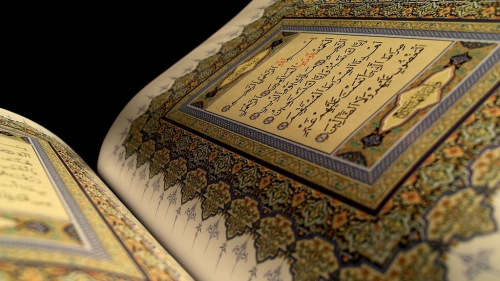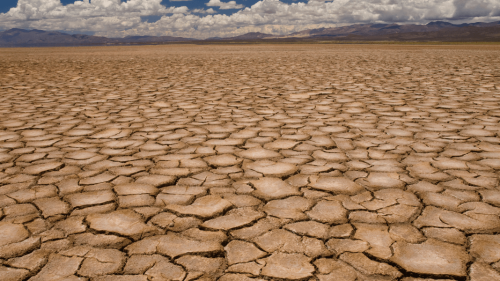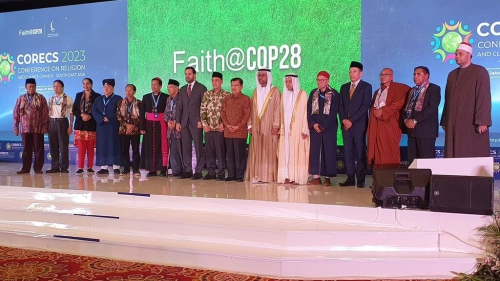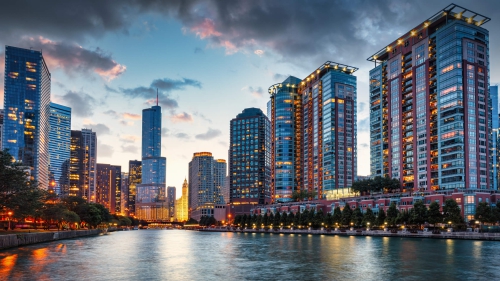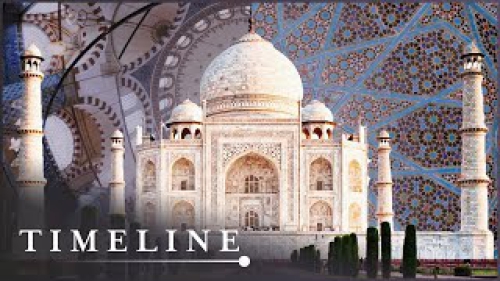The Variety of Climates on Earth and Building

The Earth’s Creator willed that no two places on Earth have the same climate and this relates to the speed, shape, disposition and rotation of the Earth. Climate affects significantly the conditions of life on Earth. Since two places on Earth do not have the same climate, it follows that world patterns of vegetation, soils and water resources vary significantly from one region to another. The effect of climate is so strong that it is also able to influence every human endeavour either directly or indirectly.
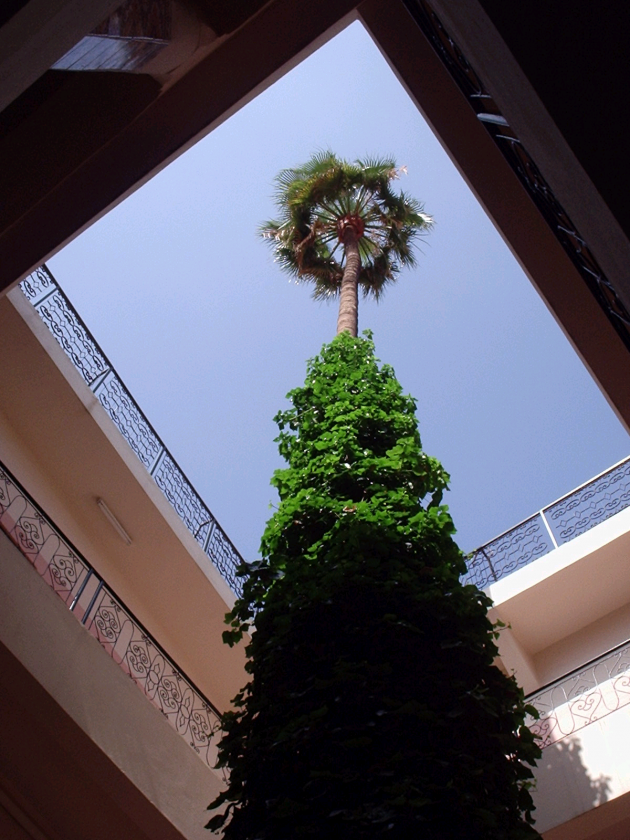
Being an integral part of the intricate web of creation, humankind cannot be excluded from the natural laws that preside over the Earth’s patterns of existence. As a result of their perpetual adaptation to the demands of various climates on Earth, different people evolved different cultural expressions such as clothing, food, architecture, and even attitude, skin and language differences. Allah (st) mentions in the Qur’an:
"And of His signs is the creation of the heavens and the earth and the diversity of your languages and your colours. Indeed in that are signs for those of knowledge." (Qur’an 30:22)
In this verse, the variations in languages and colours have been mentioned after the creation of the heavens and the Earth because the relationship between the two is causal that is, the way and purpose for which the heavens and the Earth have been created being the cause, and the differences in colours and languages, the effect. Pervasive diversity in the life forms on Earth is a direct consequence of the principles that govern the creation as a whole.
In other words, the profound diversity of creation is a compelling reality which ought to be neither overlooked nor shallowly explored. It signifies one of the clearest signs of Allah’s existence, omnipresence and omnipotence, which is bound to significantly sharpen a believer’s focus and shore up his heavenly outlook on existence. Hence, the cited verse commences with the words, “And among His signs is…” and ends with “…verily in that are signs for those who know.”
Indeed, the deeper a guided and God-conscious person delves into the subject, the more one knows about the intricacy and majesty of creation, which, in turn, brings one closer to the Creator causing him to appreciate more and more of His creation. As is the case with any scientific inquiry in Islam, the whole enterprise denotes a reading and comprehension of the signs of Allah (st) which saturate all aspects of existence, from the smallest to the grandest. In his classic Book of Animals, al-Jahiz, a prominent Muslim scholar of the ninth century, wrote that all of nature contains innumerable signs which bear witness to Allah’s Oneness, Power, Wisdom and Goodness. The miracles (signs) of Allah’s creation are as manifest in the most insignificant as in the grandest.
However, Allah’s signs in creation cannot be read by everyone; only those who believe, reflect, know, hearken, are wise, and understand (Qur’an 30: 20-30) can comprehend. Spiritually “illiterate” people blinded by their ignorance and arrogance see creation as consisting of no more than trifling and inconsequential physical entities:
"And how many a sign within the heavens and earth do they pass over while they, therefrom, are turning away." (Qur’an 12:105)
Imam al-Ghazali said that there is nothing in the world that does not testify to the unity of Allah. Only those persons who possess deep insight can hear, understand and appreciate the whole subject. For reading and appreciating the signs in nature, an outward journey is not required, only a mental journey is necessary.
‘Abdullah Yusuf ‘Ali comments in The Holy Qur’an, English Translation of the Meanings and Commentary, on the above mentioned verse: “The variations in languages and colours may be viewed from the geographical aspect or from the aspect of periods of time. All humankind was created of a single pair of parents; yet they have spread to different countries and climates and developed different languages and different shades of complexions. And yet their basic unity remains unaltered. They feel in the same way, and are all equally under Allah’s care. Then there are the variations in time. Old languages die out and new ones are evolved. New conditions of life and thought are constantly evolving new words and expressions, new syntactical structures, and new modes of pronunciation. Even old races die, and new races are born.”
The Creator’s absolute wisdom required that the Earth’s organisms are adapted to the climates in which they have been placed. When moved into a new climate, many of them either become acclimatized or they perish. The bigger difference in climate, the more problems a life form encounters while changing its original climate.
A few examples can be given here from the early history of Islamic civilization. When the first Muslims migrated from Makkah to Madinah, one of the problems they encountered was acclimatization to a new Madinah climate. Among other things, Madinah was well known throughout Arabia as a place where during certain seasons, there was a great danger of fever, especially for those who were not native to Madinah.
Not long after the migration from Makkah to Madinah, many of the Prophet’s Companions suffered from severe fever. On one of these occasions, the Prophet (sa) supplicated:
"O Allah, make Madinah as congenial and dear to us as You made Makkah congenial and dear, or more than that. Make it conducive to health, and bless us in its sa’ and its mudd (i.e., sustenance), and transfer its fever as far as al-Juhfa." (Sahih al-Bukhari)
The Prophet (sa) also supplicated:
“O Allah, increase in Madinah twice the blessings (You showered) on Makkah.” (Sahih al-Bukhari)
The Muslim armies faced a similar problem when they settled in the territories outside the Arabian Peninsula (to which they had previously introduced Islam). The second Caliph ‘Umar ibn al-Khattab (ra) lamented after having been told of the Arab dilemma in Iraq in choosing appropriate sites for their garrison settlements: “Only the places that suit the sheep and camels can suit the Arabs.”
For both animals and humans to survive through an annual cycle of seasons, they must all employ a number of thermal strategies some of which ought to be quite sophisticated. Of all the creatures, human beings have the greatest variety of thermal strategies available to them.
Lisa Heschong states in her book Thermal Delight in Architecture: “Our naked skin functions adequately in the hot-humid tropics but needs some assistance in other climates. The traditional clothing developed by various cultures often has extremely sophisticated thermal functions. The billowing white robes of the Arab reflect away the sun’s radiation while helping to fan air past the body and increase evaporative cooling. At the other extreme, the fur parka of the Eskimo keeps in both body heat and water vapour from perspiration so that the Eskimo essentially lives within a semitropical environment.”
Having said this, it is common sense to expect that houses are built in full accordance with the demands of different climates. There is no such thing as a standard house design that can suite all climates. If there could be a standard piece of clothing, or a food, that meets the requirements of every geographical context, then there could be a standard house design serving the same purpose as well; but such is never the case. However, if a house design were to be imported from a different climate, then the same ought to be adequately ‘acclimatized’ so that it would not appear as strange and at odds with the existing setting, and so that it’s projected function and utility could be optimized. Having the same house plan and design in two different climatic types is somewhat reminiscent of wearing the same outfit in two different weather conditions. Whereas the latter is never the case, and would be perceived as strange and disadvantageous, the former has somehow succeeded in becoming a common phenomenon in many regions of the world without people really realizing its failure. Furthermore, having the same house plan and design in two different climatic regions is like having the same plant and animal species in both climate types, something that is unimaginable. Could it be that some of our thermal senses have become impaired or misguided? Why do we not learn from the different varieties in plant and animal kingdoms, which are a successful story of adaptation to environmental demands and influences for survival and comfort?
Hassan Fathy elaborates on this in his book Vernacular Architecture: “A machine is independent of its environment. It is little affected by climate and not at all by society. A person, however, is a member of a living organism that constantly reacts to its environment, changing it and being changed by it. A plant provides a good example of the mutual interaction between a living organism and its environment. It possesses its own heat and water economies. Its respiratory heat is the result of metabolism which tends to raise its temperature, just as with animals. It perspires, and the evaporation of this perspiration leads to cooling, since every gram of water given off requires between 570 and 600 calories from the plant, depending on the air temperature. Consequently, plants exert a reaction on the microclimate of their environment and to some extent adjust their own temperature to their particular needs. In the same way, a building is affected by its environment. The climate of the locality and the buildings around it mould the building, so that, even though social, cultural, and economic aspects are important, it owes much of its shape to these factors.”
While criticising a section of present-day architects and their building styles that pay little or no attention whatsoever to various environment (climate) requirements, Hassan Fathy states: “He forgets the environment into which he will implant his buildings because he is attracted by new and modern innovations and gadgetry. He fails to realize that form has meaning only within the context of its environment…He has responsibility to what surrounds the site, and, if he shirks this responsibility and does violence to the environment by building without reference to it, he is committing a crime against architecture and civilization.”
A basic climate design principle is that in cooler climate locations, where external temperatures are often lower than ideal for human comfort, interior comfort is achieved by encouraging natural light and heat into the building, where thermal mass will absorb the heat and re-radiate it into interior spaces to maintain comfort majority of the time. In warm locations, the approach is to incorporate modes of shading into the building design to shield interior spaces from direct solar gain; to use high thermal mass internally to absorb excessive heat from the indoor air, and to use ventilation paths between internal and external spaces to maintain adequate cooling.
Vernacular building designs all over the world display remarkably mature thermal adaptation. Early builders consistently used forms and materials that effectively moderated prevailing climatic conditions. In the desert, for example, where daytime temperatures are extremely high and at night they get uncomfortably low, people use clay and stone as building materials because they have a high capacity to absorb solar radiation during the day and slowly re-radiate it at night. Besides, they are readily and easily available in the desert.
Creating favourable microclimates: a basic function of buildings
Howard J. Critchfield explains the meaning and importance of a microclimate as: “A microclimate is one that extends from a particular kind of surface – for example, a lawn, a pond, a parking lot – to a height at which this climate begins to blend with the general climatic conditions of a given locality. Microclimates are, in fact, the aerial environments in which individual plants and animals live. A landscape is a complex mosaic of many such climates – from urban street canyons or small vegetation canopies to the atmosphere surrounding the bodies of individual organisms. These climates, although influenced by large-scale regional conditions, are essentially created by the energy ‘budget’ of the local surface where the given microclimate occurs. The microclimate of a surface consists of a relatively thin boundary layer covering the surface, and the airspace above it that is influenced, to a lesser extent, by the surface. Temperature, wind velocity, and often humidity and radiation change more with height in this fluctuating airspace than in higher air layers. A microclimate is usually assumed to extend to a height at which 99 percent of the prevailing local conditions of temperature and wind velocity are reached. This height is determined largely by the relative strength of local air turbulence.”
According to Ibn Khaldoon, one of the primary tasks of architecture is to create favourable microclimates where humankind can live and work. It is unavoidable for humankind to reflect upon how to avert harm arising from heat and cold by using houses which have walls and roofs to intervene between the inhabitants of a house and the temperature outside.
Every building affects the climate of its site. No sooner do we build an enclosure or even a wall than we create a microclimate slightly different from the general climatic conditions of a given locality. Whenever there is a building there is a shade cast by the building onto the ground, and the portion of the site with a wall facing the sun receives additional reflected heat-load from the building’s walls. By constructing a building on a land, the latter is segmented into a hot zone (on the side of the sun) and a cool zone (on the shaded side). This occurs as part of locating the building on the land. Many other considerations contribute to the creation of favourable or otherwise microclimates inside and outside buildings.
In fact, inviting nature’s advantages and repelling its disadvantages by means of adopting certain building styles is an innate quality of humankind. Since ancient times, from the first people on earth, humankind has reacted to the environment, using faculties to develop techniques and technologies.
During the era of the Prophet (sa) and his Companions, building styles, methods and technology were simple and people tried very hard to use the available resources to their full capacity. Salman al-Farisi (ra), a celebrated Companion of the Prophet (sa), once summoned a mason to build a house for him. Salman asked the man how he was going to do the job and he replied: “It is a house for you to protect yourself against the heat of the sun and to dwell in during the cold weather.”
While drawing attention to the rights and duties of neighbours, the Prophet (sa) said, among other things: “…Without your neighbour’s permission don’t extend or build the walls of your building so high so that it obstructs your neighbour’s air and view…” (Ihya’ ‘Ulum al-Din)
‘Abdullah ibn ‘Umar mentions: “During the lifetime of the Prophet (sa) I built a house with my own hands so that it might protect me from the rain and shade me from the sun; and none of Allah’s creatures assisted me in building it.” (Sahih al-Bukhari)
In his compilation of the Prophet’s hadith, al-Bukhari recorded this Prophet’s Companion’s tradition under a separate section titled, A Section on what is Narrated about Building. According to one of the commentators of al-Bukhari’s compilation, Abu Muhammad al-‘Ayni, only such houses which are meant to protect their owners from the rain, the sun and the cold weather, and serve them as a refuge from the outside world are legitimate houses. All other reasons are deemed less important. For instance, it is unlawful to build a house in order to compete with someone, show off one’s status, wealth, or influence.
Indeed, it is not by chance that al-Bukhari used the account of the Prophet’s Companion ‘Abdullah ibn ‘Umar as a highlight of the said section on building and architecture because ‘Abdullah ibn ‘Umar, more than anybody else, paid special attention to each and every of the Prophet’s actions in all matters and then humbly imitated his deeds to the finest detail. Since he lived a long blessed life loyally adhering to the Prophet’s Sunnah, many people besought Allah: “O Allah, save Ibn ‘Umar as long as I live so that I can follow him. I don’t know anyone still adhering to the early traditions except him.” Hence, a good way to shore up accounts as to some practices of the Prophet (sa) is to quote the authentic hadith which are ascribed to ‘Abdullâh ibn ‘Umar on the same subject.
The story of the Companions of the Cave (from the Qur’an) gives some hints as to the importance of giving due consideration to the atmosphere and the geography of a site, so that a favourable thermal environment of a building or a site is ensured:
"And [had you been present], you would see the sun when it rose, inclining away from their cave on the right, and when it set, passing away from them on the left, while they were [laying] within an open space thereof. That was from the signs of Allah. He whom Allah guides is the [rightly] guided, but he whom He leaves astray – never will you find for him a protecting guide." (Qur’an 18:17)
‘Abdullah Yusuf ‘Ali comments on this verse: “In the latitude of Ephesus, 38 degrees north, well above the sun’s northern declination, a cave opening to north, would never have the heat of the sun within it, as the sunny side would be the south. If the youths lay on their backs with their faces looking to the north towards the entrance of the Cave, the sun would rise on their right side, declining to the south, and set on their left sides, leaving them cool and comfortable.”
On the outset of the existence of the Prophet’s mosque in Madinah, no section was shaded. The mosque’s framework simply consisted of an enclosure with entrances in the walls except the one facing the qiblah. However, after sometime, when the Companions of the Prophet (sa) had complained about the hot weather and how much it troubled them during prayer time, a roof of palm-leaves supported by palm-trunks as columns on the side of the qiblah was built. Mud was later added to mitigate rain dripping onto the floor of the mosque.
There was another strategy which aimed at helping to furnish the Prophet’s mosque with a favourable microclimate. At first, the ground of the mosque was bare. One night it rained profusely and the ground became too wet to be prostrated onto. As a result, some people brought along some pebbles to overcome the problem during the next prayer. After the prayer, having seen what some of his companions had done, the Prophet (sa) said: “This is a very good idea.” Hence, the entire area of the mosque was strewn with pebbles.
Small mats made of palm branches and big enough for the face and hands to be placed on them during prostration were later introduced.
Strewing the mosque ground with pebbles proved very advantageous as pebbles allowed rainwater to go through to the ground and once absorbed by it, there were no muddy areas inside the mosque. During dry spells, on the other hand, the floor without pebbles would have been rendered dusty and occasionally unpleasant for the mosque, as dust could easily fill the air. The same strategy was employed by Ziyad ibn Abeeh, an Umayyad viceroy in Iraq, having rebuilt the Great Mosque of Basra in the year 46/665 ordered pebbles to be spread on the floor so as to prevent people from clapping their hands whilst removing dust from them.
Since the mosque floor was covered with pebbles, it took a longer time to dry after it had rained, or had been washed which allowed for longer evaporation and cooling of the surface. In the winter, no matter how uncomfortably cold pebbles might have been, the condition was by far better than the one generated by a bare and frequently wet floor. Also, the presence of pebbles was very helpful because generally some of the thermal qualities of many stone types are that they have a high level of resistance and a low level of thermal conductivity.
When the Caliph ‘Umar (ra) decided to refurbish and extend the Prophet’s mosque, he is reported to have said: “I shelter the people from rain (by repairing and expanding the mosque), and by no means shall the mosque be painted red or yellow (decorated) so that the people may be coaxed into losing concentration while offering their prayers.” (Sahih al-Bukhari)
When the construction of the mosque was complete, its roof was considerably bigger and higher from what it used to be before. Certainly, in view of the relentless increase in the number of worshippers, several visual, acoustic and environmental factors necessitated extending and elevating the roofed area. On top of those factors, were the lighting and ventilation requirements, which were related to the overall comfort, communication and bolstering of the mosque’s function.
It is natural and extremely beneficial for humankind to be a climate-conscious and climate-responsive creature, definitely more than the rest of living things, not only while creating buildings but also in all other activities, as has been further implied in the following verse of the Qur’an:
"And Allah has made for you, from that which He has created, shadows and has made for you from the mountains, shelters and has made for you garments which protect you from the heat..." (Qur’an 16:81)
This is seen as one of Allah’s great favours on humankind. The spiritual side and purpose of this observable fact is likewise to be respected and utilized for rallying to Allah’s universal will:
"…Thus does He complete His favour upon you that you might submit [to Him]." (Qur’an 16: 81)
On an occasion, while the Prophet (sa) was on a journey, he said to his Companions regarding the performance of the zuhr (noon) prayer: “Wait till it [the weather] gets cooler.” He said the same again till the shade of the hillocks extended: “Delay the [zuhr] prayer till it gets cooler, for the severity of heat is from the increase in the heat of hell [fire]. (Sahih al-Bukhari)
On another occasion while the Prophet (sa) was delivering a sermon, he saw a man standing so he asked about him. The people said: “It is Abu Israil who has vowed that he will stand and never sit down, and he will never come in the shade, nor speak to anybody, and will fast.” Since they were unreasonable and impractical, the Prophet (sa) was unhappy with the vows the man had made, so he said to the people: “Order him to speak and let him come in the shade, and make him sit down, but let him complete his fast.” (Sahih al-Bukhari)
*****
This article is an excerpt from the author’s book: “The Origins and Functions of Islamic Domestic Courtyards”
Topics: Climate Change, Islamic Art And Architecture, Nature And Environment
Views: 2856
Related Suggestions









